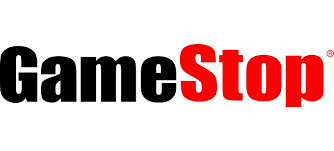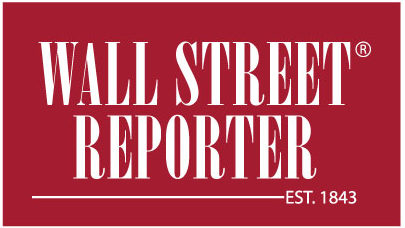
GameStop Corp. (NYSE: GME) Q4 2021 Earnings Highlights
CEO Matt Furlong
“…While we are still in the early stages of our transformation, we believe the steps taken over the last several months will be key value drivers for quarters and years down the road. The first year of our transformation was about starting to turn GameStop into a customer-obsessed technology company, one that has wider offerings, more competitive pricing, faster shipping, stronger customer service and an easier shopping experience.
With that said, here is a brief recap of what changed in fiscal year 2021: we installed a new management team comprised of technology veterans and introduced a more equity-focused executive compensation structure to increase alignment with stockholders; we refreshed the Board with stockholders and individuals who possess records of value creation, while reducing individual director compensation; we ended relationships with high-priced external consultants who were costing the company millions of dollars per year; we hired hundreds of new individuals with e-commerce, operations and technology experience, while eliminating many redundant and unnecessary roles; we recapitalized the company’s balance sheet after raising approximately $1.67 billion in capital; we expanded our product catalog to seize more market share in areas such as PC gaming, personal electronics and virtual reality; we invested in our fulfillment network by standing up new facilities on the East Coast in York, Pennsylvania, and on the West Coast in Reno, Nevada; we invested in our systems and tech stack after years of decay and neglect; we invested in U.S.-based customer service and established a new facility in South Florida; we invested in a dedicated blockchain team and new capabilities to drive the development of initiatives such as our NFT marketplace, which we expect to launch by the end of the second quarter; we see significant long-term potential in the more than $40 billion market for NFTs.
In keeping with our focus on the customer, we are going to continue taking steps to create new offerings and make targeted bets in blockchain gaming and cryptocurrency. We recognize that our special connectivity with gamers provides us a unique opportunity in the Web 3.0 and digital asset world. We have learned from the mistakes of the past decade when GameStop failed to adapt to the future of gaming. It is important to stress that GameStop had become such a cyclical business and so capital starved that we have had to rebuild it from within. We’ve also had to change the way we assess revenue opportunities by starting to embrace, rather than run from, the new frontiers of gaming. Although there is a lot more hard work and necessary execution in front of us, GameStop is a completely different company today than it was at the beginning of the fiscal year.
Shifting to the fourth quarter, I want to briefly touch on a few areas. We continued to establish new and expanded brand relationships, including with PC gaming companies such as Alienware, Corsair and Lenovo. This helped grow our PC gaming sales by 150% for the full year. We also formed a partnership with Razer to support sustained growth in PC gaming and console accessories such as controllers and headsets. We now have more than 100 Razer SKUs, including the company’s latest laptop. We grew PowerUp Rewards Pro members by 31.8% on a year-over-year basis, taking total membership to approximately 5.8 million. We launched a redesigned app, which includes an enhanced user interface, improved scalability for a larger product catalog and more functionality to support exclusive offers and promotions. We entered into a partnership with Immutable X that is intended to support the development of our NFT marketplace and provide up to $150 million in IMX tokens upon achievement of certain milestones. We have commenced discussions with an array of Layer 1s and Layer 2s about prospective partnerships that include development benefits and financial incentives. If and when more deals come to fruition, we will announce them.
Let me now turn to our financial results. Net sales were $2.25 billion for the quarter compared to $2.12 billion in the fourth quarter of 2020 and $2.19 billion in the fourth quarter of 2019. This was the first quarter in which our growth topped pre-pandemic levels. For the full year, net sales were $6.01 billion compared to $5.09 billion for fiscal year 2020. As indicated in the past, long-term sales growth is the primary metric by which we believe stockholders should assess our execution.
SG&A was $538.9 million for the quarter or 23.9% of sales compared to $419.1 million or 19.7% of sales in last year’s fourth quarter. We reported a net loss of $147.5 million, or $1.94 per diluted share compared to a net income of $80.3 million, or income per diluted share of $1.18 in the prior year fourth quarter. For the full year, SG&A was $1.71 billion compared to $1.51 billion for the last fiscal year. We had a net loss of $381.3 million for fiscal year 2021 relative to $215.3 million for fiscal year 2020.
Turning to the balance sheet, we finished the year with cash and cash equivalents of over $1.27 billion, roughly $760 million higher than the company’s cash position at the close of last year. We are maintaining a sizable cash position, even while continuing to invest heavily in inventory to drive pragmatic growth and meet demand amidst global supply chain issues. We intend to build up our cash position by the end of fiscal year 2022, assuming the operating environment permits.
At the end of the year, we had no borrowings under our ABL facility and no debt other than a $44.6 million low-interest, unsecured term loan associated with the French government’s response to COVID-19. Capital expenditures for the quarter were $21.3 million, bringing full year CapEx to $62 million. CapEx may remain elevated as we make pragmatic investments in our infrastructure and tech.
In the fourth quarter, cash flow from operations was an outflow of $110.3 million compared to an inflow of $164.8 million during the same period last year. In order to meet customer demand throughout the holiday season, we maintained a higher inventory level. We believe our inventory level remains prudent given our operating headwinds and increased customer demand. We ended the year with $915 million in inventory compared to $602.5 million at the close of fiscal year 2020. To put things into context, the combination of supply chain issues and the Omicron variant had a sizable impact on this past year’s holiday season. We made the conscious decision to lean in and absorb higher costs in order to meet customer demand. We felt and continue to feel that investing in our customers and rebuilding brand loyalty right now is in the company’s best interest over the long term…”
